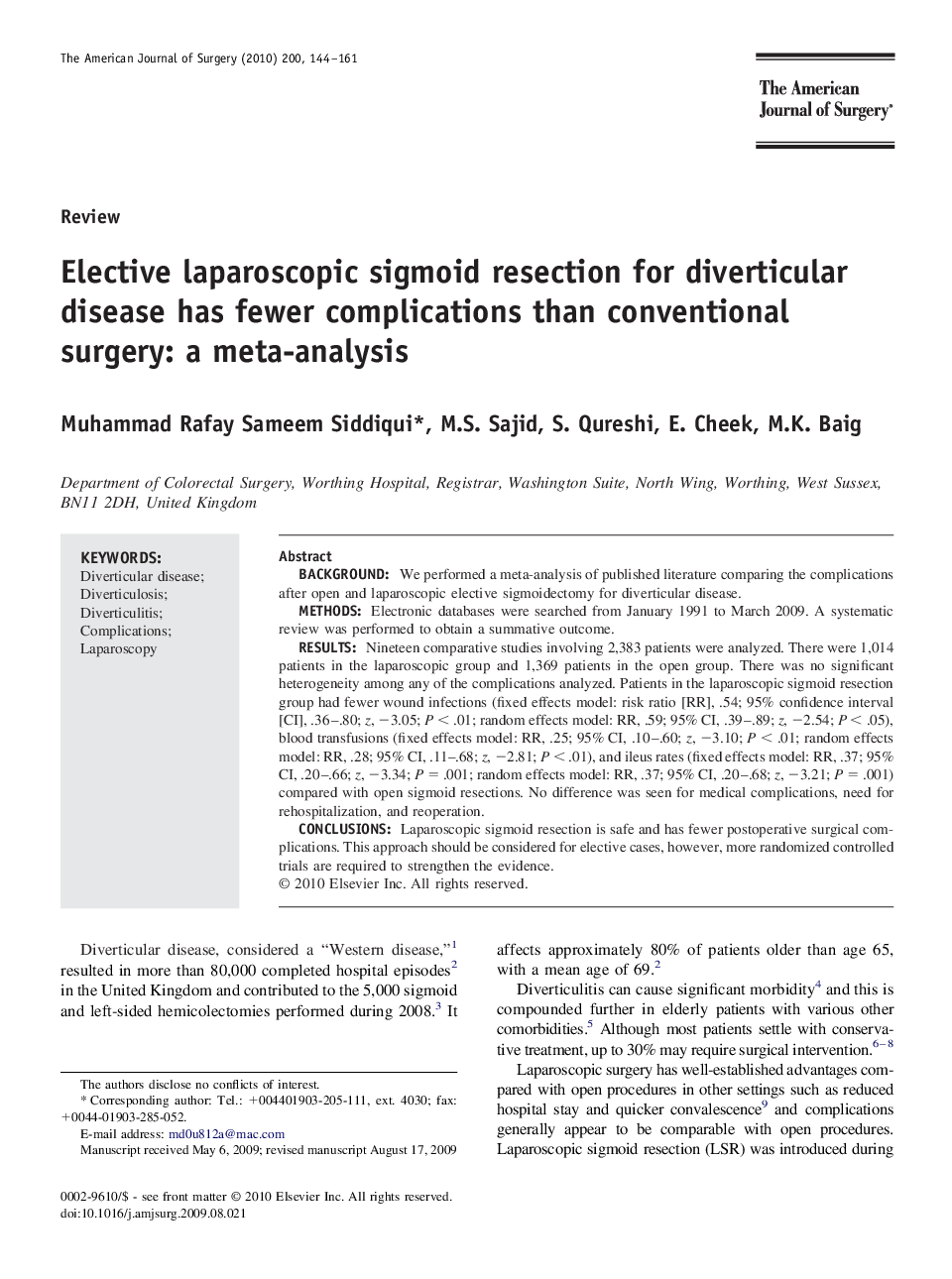| Article ID | Journal | Published Year | Pages | File Type |
|---|---|---|---|---|
| 4280373 | The American Journal of Surgery | 2010 | 18 Pages |
BackgroundWe performed a meta-analysis of published literature comparing the complications after open and laparoscopic elective sigmoidectomy for diverticular disease.MethodsElectronic databases were searched from January 1991 to March 2009. A systematic review was performed to obtain a summative outcome.ResultsNineteen comparative studies involving 2,383 patients were analyzed. There were 1,014 patients in the laparoscopic group and 1,369 patients in the open group. There was no significant heterogeneity among any of the complications analyzed. Patients in the laparoscopic sigmoid resection group had fewer wound infections (fixed effects model: risk ratio [RR], .54; 95% confidence interval [CI], .36–.80; z, −3.05; P < .01; random effects model: RR, .59; 95% CI, .39–.89; z, −2.54; P < .05), blood transfusions (fixed effects model: RR, .25; 95% CI, .10–.60; z, −3.10; P < .01; random effects model: RR, .28; 95% CI, .11–.68; z, −2.81; P < .01), and ileus rates (fixed effects model: RR, .37; 95% CI, .20–.66; z, −3.34; P = .001; random effects model: RR, .37; 95% CI, .20–.68; z, −3.21; P = .001) compared with open sigmoid resections. No difference was seen for medical complications, need for rehospitalization, and reoperation.ConclusionsLaparoscopic sigmoid resection is safe and has fewer postoperative surgical complications. This approach should be considered for elective cases, however, more randomized controlled trials are required to strengthen the evidence.
